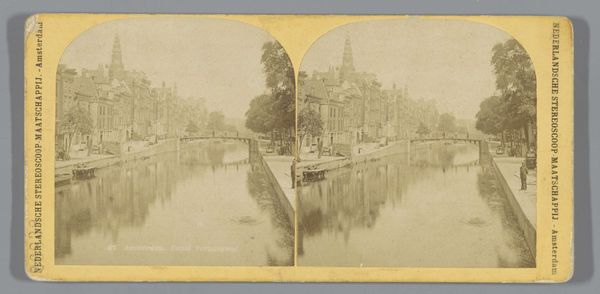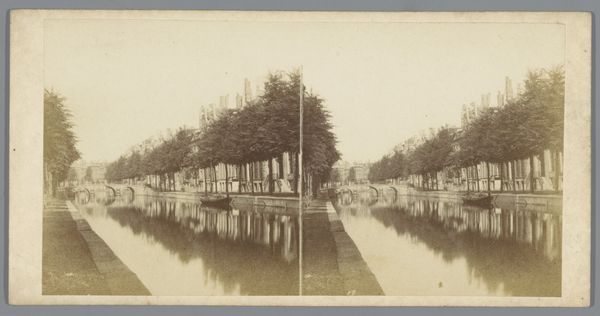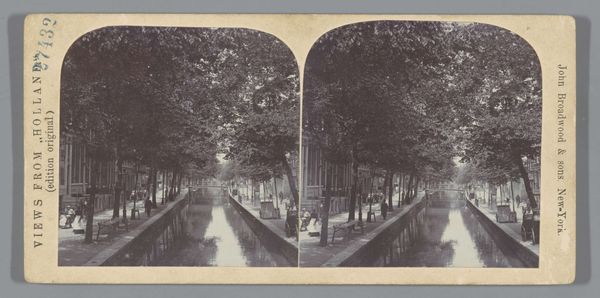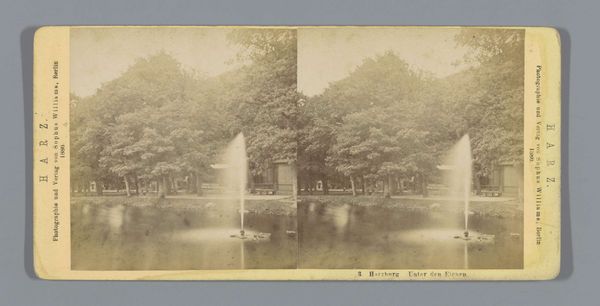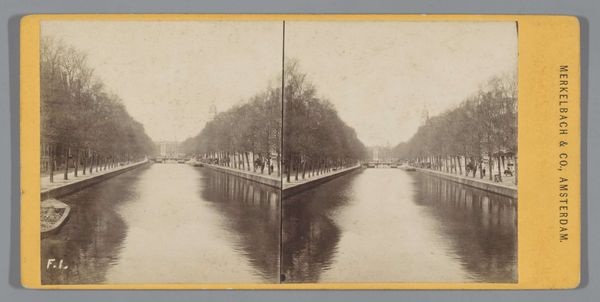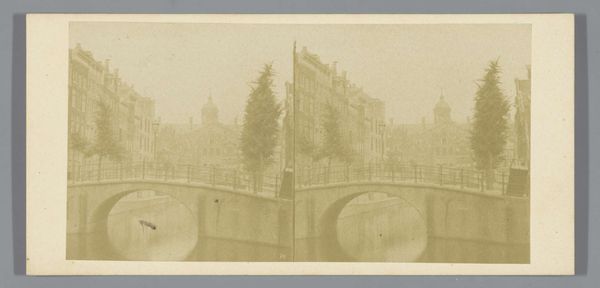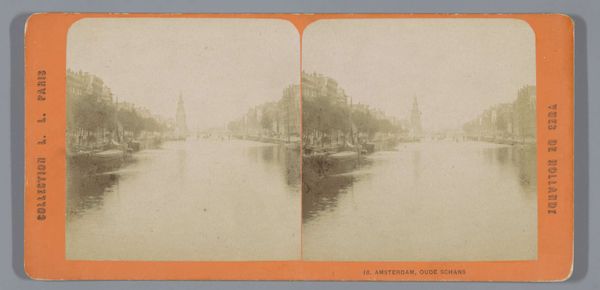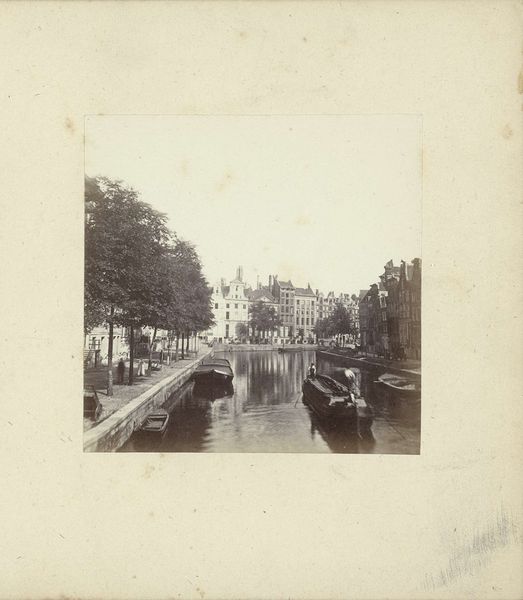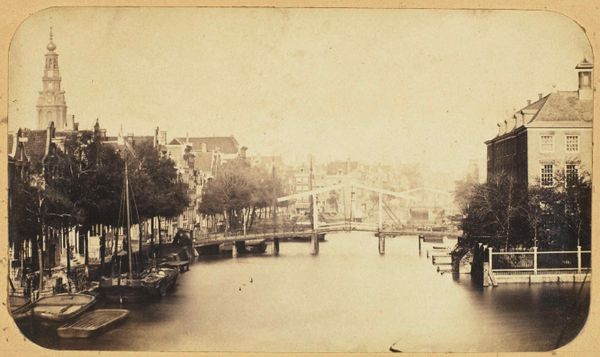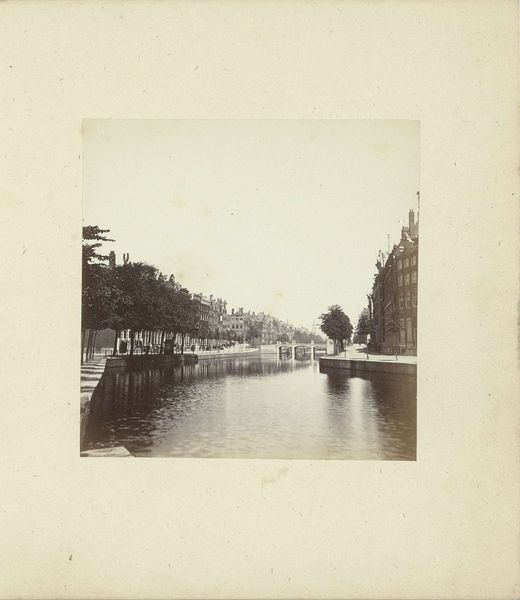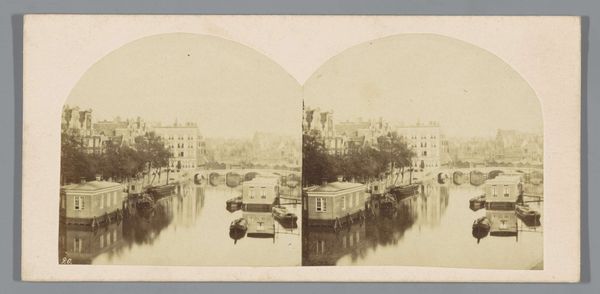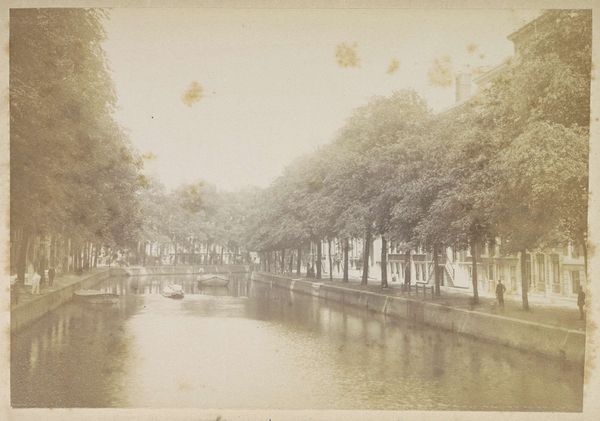
Gezicht op de Gouden Bocht in de Herengracht, Amsterdam 1859 - 1870
0:00
0:00
photography
#
landscape
#
photography
#
cityscape
Dimensions: height 84 mm, width 174 mm
Copyright: Rijks Museum: Open Domain
Editor: This is a photograph by Pieter Oosterhuis, taken sometime between 1859 and 1870. It's called *Gezicht op de Gouden Bocht in de Herengracht, Amsterdam*, or *View of the Golden Bend in the Herengracht, Amsterdam.* It's currently held at the Rijksmuseum. The stillness and muted tones give the scene a very serene, almost melancholic, quality. What do you see in this piece? Curator: Beyond its aesthetic appeal, I see a carefully constructed visual statement about wealth and power in 19th-century Amsterdam. Consider the Golden Bend itself – the most prestigious part of the Herengracht canal, inhabited by the city's elite. Oosterhuis' photograph, taken during a period of significant social and economic change, consciously displays that wealth and status. What do you notice about who is NOT represented in the photograph? Editor: Well, there are very few people visible at all. And you are right—they appear to be only wealthy people out for a stroll. I guess it is showing the wealth by deliberately excluding others. Curator: Exactly! Photography was still a relatively new medium, often employed to document reality. By framing this specific view, Oosterhuis isn't simply capturing a scene; he's constructing a narrative about the prevailing social hierarchy. We have the grand houses of the elite mirrored by the calm water. Think about that reflection – what is being reflected, and for whom? Editor: It makes you wonder about those who built and maintained that wealth but aren't pictured. Their stories are absent. Curator: Precisely. This image provides a point of reflection, not just of the architecture but also the underlying structures that allow such spaces and divisions to exist, inviting questions about representation, exclusion, and the power dynamics inherent in seemingly objective images. Editor: That’s fascinating. I never would have considered that a cityscape photograph could be so socially charged. Thanks for that new perspective! Curator: My pleasure! It’s in questioning those very foundations of established art history that we allow for richer, more multifaceted narratives.
Comments
No comments
Be the first to comment and join the conversation on the ultimate creative platform.
